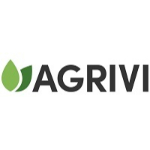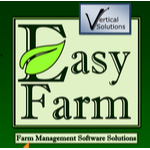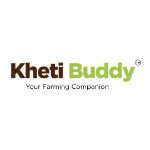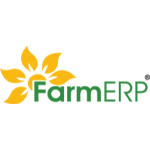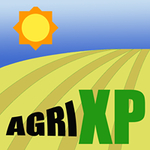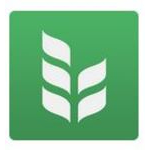TechnologyCounter provides genuine, unbiased real user reviews to help buyers make informed decisions. We may earn a referral fee when you purchase through our links, at no extra cost to you.
List of 15 Best Agriculture Software
Showing 1 - 15 of 81 productsAgworld is a software solution designed for the modern agricultural industry. With advanced features design, Agworld empowers farmers to seamlessly manage their operations, track resources, and make data-driven decisions. Whether youre a small family...Read Agworld Reviews
AGRIVI is a farm management solution for modern farmers. This innovative software streamlines every aspect of your agricultural operations, providing real-time insights and optimizing productivity. With AGRIVI, experience easier planning, better deci...Read AGRIVI Reviews
EasyFarm is a all-in-one farm management software designed to simplify and streamline your agricultural operations. With its user-friendly interface is a tools, EasyFarm empowers farmers to effortlessly manage their tasks, track progress, and make be...Read EasyFarm Reviews
KhetiBuddy is a farming companion. With KhetiBuddy, farming has been made easier, smarter, and more efficient than ever before. This powerful software helps farmers take control of their crops by providing tools and resources to make informed decisio...Read KhetiBuddy Reviews
Granular Insights is a software that provides unparalleled data and analytics for businesses. With its advanced technology and user-friendly interface, Granular Insights allows businesses to easily analyze and track their performance, make informed d...Read Granular Insights Reviews
FarmERP, a revolutionary farm management software designed to streamline and optimize all aspects of agricultural operations. From crop planning and production to finance and marketing, FarmERP offers a comprehensive solution for farmers and agribusi...Read FarmERP Reviews
CropTracker is a all-in-one solution for managing your crops from seed to harvest. With its user-friendly interface and powerful features, CropTracker streamlines record-keeping, improves efficiency, and provides valuable insights to help you maximiz...Read CropTracker Reviews
John Deere has been a trusted name in agriculture and farming equipment for over 180 years. Known for their innovative machinery, John Deere continues to be a leader in the industry, providing top-quality products and services that help farmers and l...Read John Deere Reviews
AgriXP is a software designed specifically for the agriculture industry. This innovative tool streamlines and optimizes all aspects of farm management, helping farmers increase efficiency, improve productivity, and maximize profits. With AgriXP, farm...Read AgriXP Reviews
Fieldmargin is a user-friendly and innovative software designed for farmers and land managers to efficiently manage their fields, crops, and tasks. With its intuitive interface and powerful features, fieldmargin takes the hassle out of data recording...Read fieldmargin Reviews
Herdwatch is a software designed for farmers to simplify their daily tasks and manage their livestock with ease. With its user-friendly interface, real-time updates, features, Herdwatch allows farmers to streamline their operations and make more info...Read Herdwatch Reviews
FarmLogic is a farm management software designed to streamline and simplify daily operations. Developed with the modern farmer in mind, FarmLogic offers all-in-one functionality for record-keeping, inventory tracking, weather monitoring, and more. Sa...Read FarmLogic Reviews
AgriSys ERP is a software solution designed specifically for the agricultural industry. With its advanced features and user-friendly interface, AgriSys ERP streamlines processes, increases efficiency, and maximizes profits for farm businesses. Say go...Read AgriSys ERP Reviews
Bushel Farm is not just your average farm. Its a virtual hub of agricultural innovation and resources, dedicated to helping farmers grow and succeed. With a team of experts and a user-friendly platform, Bushel Farm provides valuable tools and insight...Read Bushel Farm Reviews
AgriWebb is revolutionizing the agricultural industry with its innovative software that streamlines farm management and improves productivity. With an easy-to-use interface and powerful features designed specifically for farmers, AgriWebb is helping...Read AgriWebb Reviews
- What Is Agriculture Tools Software?
- Top Reasons Why Businesses Need Agriculture Tools Software?
- What Are the Top Key Features of Agriculture Tools Software?
- What Are the Top Benefits of Agriculture Tools Software?
- What Are the Steps to Choose the Right Agriculture Tools Software?
- What Are the Types of Agriculture Tools Software for Different Industries?
- What Are the Technology Trends for Best Agriculture Tools Software?
- What Are the Deployment Options for Agriculture Tools Software?
What Is Agriculture Tools Software?
Agricultural Tools Software is a specialist software application developed to enhance the operational efficiency of farmers.
Common functionalities of agriculture management software technology often encompass the monitoring of crop conditions, data storage and management, formulation of planting and harvesting schedules, as well as facilitating informed decision-making for farmers regarding aspects such as fertilization, irrigation, pest control, and other related matters.
The software used in agriculture additionally aids farmers in effectively managing their financial resources, adopting and integrating novel technology, optimizing the output of their agricultural products, and reducing operational expenses. Agribusiness software solutions offer farmers the capability to gather, retain, examine, and export substantial volumes of data, frequently via a cloud-based platform.
The utilization of the best agriculture software has the potential to enhance efficiency and cost-effectiveness for farmers, while concurrently augmenting crop productivity and financial gains. Moreover, Agri software frequently undergoes integration with hardware components, such sensors and drones, which serve to enhance farmers' ability to effectively manage their agricultural yields.
Agricultural tools software has emerged as an indispensable asset for farming enterprises, including both extensive and limited scales of operation.
Top Reasons Why Businesses Need Agriculture Tools Software?
1. One potential strategy for enhancing operational efficiency involves the implementation of automated processes for data collecting and processing.
2. Monitor and analyze data pertaining to agricultural production, including crop yields, market prices, climatic conditions, and other relevant factors.
3. In order to assist decision-making, it is necessary to estimate the yield and income of crops.
4. One can generate comprehensive cartographic representations of agricultural fields for the purpose of conducting field scouting activities and managing crop cultivation.
5. One potential improvement is to enhance the monitoring capabilities of numerous crop fields, facilitate issue identification, and offer corresponding solutions.
6. The optimal timing and location for planting and harvesting crops to maximize production should be determined.
7. Establish a digital field notebook for the purpose of recording pertinent observations and guidelines for subsequent agricultural cultivation endeavors.
8. One potential application of weather forecasting is to anticipate future weather conditions in order to make informed judgments regarding the timing of sowing and harvesting activities.
9. The process involves collecting soil data and incorporating it into artificial intelligence (AI) tools in order to provide comprehensive reports and get valuable insights.
10. Design and implement fertigation systems to determine optimal nutrient composition and application rates for certain seasonal conditions.
11. Facilitate the improvement of communication channels between farmers and specialists in the agricultural sector.
12. The objective is to optimize operational procedures and enhance adherence to governmental regulations.
13. The objective is to enhance supplier management by devising optimization strategies for the procurement and inventory management of supplies.
14. The objective is to implement automated systems for water management in order to identify optimal irrigation solutions.
15. Develop precise and user-friendly pest and disease management protocols.
What Are the Top Key Features of Agriculture Tools Software?
1. Crop Management: Agricultural tools software typically encompasses functionalities related to crop management, facilitating farmers in efficiently monitoring and overseeing the cultivation of their crops.
This encompasses functionalities such as monitoring the growth progress of cultivated crops, assessing soil conditions, and time tracking of harvest cycles.
2. Livestock Management: Typically, Agriculture software solutions encompass functionalities that facilitate farmers in monitoring their animals and their day-to-day operations. These aspects encompass the monitoring of feed consumption, documentation of breeding data, and implementation of health management protocols.
3. Irrigation Tracking: Agricultural tools software typically encompasses functionalities that facilitate the monitoring and administration of irrigation requirements by farmers. The aforementioned capabilities encompass automatic irrigation scheduling, water usage tracking, and soil analysis.
4. Weather Forecasting: A common component of best agricultural software tools is the incorporation of functionalities that facilitate the monitoring and forecasting of meteorological conditions by farmers. The aforementioned elements encompass real-time forecast data, long-term forecasts, and warnings.
5. Financial Tracking: Agriculture tools software typically encompasses functionalities that facilitate the efficient management of financial data pertaining to farming enterprises. This encompasses functionalities such as the administration of invoices, budgeting, and tracking of income.
6. Real-time Information Dashboard: Agriculture management software frequently include functionalities that let farmers obtain up-to-date information pertaining to their farming operations. The aforementioned functionalities encompass realtime data analysis, activity tracking, and data sharing.
7. Data Analysis: Agri software typically encompasses functionalities that enable farmers to expeditiously examine data pertaining to their agricultural practices. The aforementioned features encompass trend tracking, predictive analytics, and agricultural modeling.
8. Remote Access: Agriculture software typically encompasses functionalities that enable farmers to conveniently access their data and effectively manage their farming operations regardless of their device or geographical location.
This encompasses the capacity to remotely access and analyze data, modify information, and exercise remote control over agricultural machinery.
What Are the Top Benefits of Agriculture Tools Software?
1. Improved Efficiency: The implementation of best agriculture tools software streamlines the labor-intensive tasks associated with farming, resulting in notable increases in productivity, efficiency, and precision.
This program facilitates farmers in effectively monitoring their crops and making prompt decisions, thereby optimizing agricultural yields and minimizing resource waste management.
2. Accurate Data Analysis: The Agri software is designed to effectively monitor, document, and evaluate various data pertaining to soil composition, meteorological patterns, crop development, and other essential factors crucial for achieving optimal crop cultivation outcomes.
Agriculture management software enables farmers to make well-informed decisions pertaining to crop management and the prediction of production expectations.
3. Enhanced Crop Production: By utilizing data collected through software, farmers can enhance the comprehension of their crops' requirements and effectively tackle issues such as pest infestations or heightened demands for water or fertilizer.
The software additionally aids in predicting crop yields and detecting any problems in advance to prevent them from reaching critical levels.
4. Improved Monitoring and Maintenance: The Agriculture Tools software facilitates the efficient management and surveillance of agricultural machinery and other essential assets.
Through the systematic monitoring and examination of maintenance data, agricultural practitioners have the ability to detect and proactively resolve any prospective issues prior to their escalation into financially burdensome or crop-related concerns.
5. Reduced Operating Costs: The implementation of Agriculture software facilitates the optimization of manual procedures, resulting in enhanced efficiency and reduced operating costs. These cost reductions encompass both temporal and monetary aspects. Agri software solution aids farmers in achieving cost savings and enhancing long-term profitability.
What Are the Steps to Choose the Right Agriculture Tools Software?
1. Define the purpose: Consider what your desired outcomes are in utilizing an agriculture software. The fundamental objective of this task is to ascertain the main goal of the software and afterwards determine the specific features that are required.
2. Evaluate the options: After determining your specific needs, it is essential to assess the many alternatives in order to choose the most suitable software for agricultural instruments that aligns with your expectations. Consider the financial constraints, level of excellence, potential for expansion, and additional functionalities inherent in the software.
3. Check for compatibility: Agriculture software is imperative to verify the compatibility of the chosen software with the pre-existing systems, including hardware and operating system. Implementing this measure will guarantee seamless and continuous functioning.
4. Consider the user interface: Given that the user interface serves as the primary point of entry for a majority of users, Best agriculture software is imperative to ensure that it possesses qualities of intuitiveness and user-friendliness. Examine the presence of functionalities such as drag-and-drop capability, real-time analysis, and customizable views.
5. Analyze the security feature: Agriculture management software is imperative to select software that incorporates powerful security mechanisms in order to safeguard data and uphold privacy.
6. Ask for a trial: Request the seller to provide a trial version of the product in order to do a firsthand assessment. This will facilitate the examination of the characteristics and assessment of the compatibility and usability.
7. Read reviews: Examine evaluations from professionals inside the sector, clients, and other individuals utilizing the tool program in order to assess their perspectives and sentiments. This will provide an understanding of the level of customer service and troubleshooting assistance offered by the vendor.
What Are the Types of Agriculture Tools Software for Different Industries?
The categorization of Best agriculture software for various industries may generally be classified into five distinct groups.
1. Agriculture management software: Agriculture management software application facilitates the management of various operational tasks undertaken by farmers on a daily basis, encompassing activities such as financial planning, monitoring of stock levels, organization of schedules, and oversight of crop and livestock operations.
Prominent instances of farm management software encompass FarmLogs, Agrian, and AgSquared.
2. GIS software: Geographic Information System (GIS) software facilitates the analysis of spatial data for agricultural purposes, thereby augmenting the decision-making process through the provision of maps, photographs, and other visual aids. Two common software used in agriculture Geographic Information System (GIS) software packages are ArcGIS and QGIS.
3. Crop modelling software: Crop modelling software is a valuable tool utilized by farmers to anticipate and forecast agricultural outcomes pertaining to many elements such as weather patterns, soil characteristics, and additional environmental aspects.
Some examples of agricultural simulation models commonly used in agribusiness software solutions research and practice are DSSAT, CropSyst, and CropDesk.
4. Artificial Intelligence (AI) software: Artificial intelligence (AI) facilitates the extraction of valuable insights from extensive datasets in the agricultural sector through the automation of data analysis procedures. Prominent instances encompass FarmBeats and Blue River Technology.
5. Drone/Robot software: The utilization of drone and robotic software in agriculture facilitates farmers in the acquisition of data and the implementation of precision farming techniques. Some examples of companies in this field are PrecisionHawk and Autonomous Tractor Corporation.
What Are the Technology Trends for Best Agriculture Tools Software?
The technology trends pertaining to the most effective Agriculture Tools Software can be outlined as follows.
1. Use of Big Data analytics - The significance of Big Data analytics in facilitating efficient Agricultural operations is steadily growing. By utilizing Big Data analytics, farmers have the ability to integrate real-time data collected from a multitude of sensors, alongside historical and seasonal patterns, in order to make accurate predictions on crop yields.
This enables individuals to make better knowledgeable choices regarding farm management and the development of innovative farming approaches.
2. Cloud computing – Cloud computing offers significant advantages for farmers seeking to reduce expenses and enhance operational effectiveness. The utilization of Agri software enables the storage of substantial volumes of data in cloud-based systems, facilitating convenient and ubiquitous accessibility.
3. Automation – The significance of automation is growing due to its ability to enhance farmers' efficiency in farm management. Automation tools have the capability to effectively monitor soil moisture levels, facilitate crop harvesting, oversee irrigation systems, and do various other agricultural jobs.
This utilization of automation technologies leads to enhanced efficiency and the attainment of more precise outcomes.
4. Artificial Intelligence (AI) – Artificial intelligence (AI) is increasingly being employed in the field of Agriculture with the aim of enhancing crop productivity and mitigating financial burdens associated with farming operations. Artificial intelligence (AI) has the potential to assist in the identification of weeds, pests, and illnesses, while also facilitating the monitoring of crop output.
This practice not only facilitates the enhanced management of farms by farmers but also mitigates the potential risks associated with harvest loss arising from weather fluctuations or other pertinent circumstances.
5. Robotics and drones – Drones and robots have the potential to enhance agricultural practices by facilitating more meticulous crop monitoring. Furthermore, they possess the capability to identify possible hazards such as diseases, pests, or weeds in advance, so preventing their escalation into problematic situations.
Certain unmanned aerial vehicles (UAVs), commonly known as drones, possess the capability to administer fertilizers or pesticides, while robotic systems can be employed for the purpose of overseeing and regulating agricultural harvests.
What Are the Deployment Options for Agriculture Tools Software?
The deployment choices available for agriculture software encompass on-premises, cloud-based, and hybrid deployment alternatives.
1. The implementation of on-premises deployment necessitates the installation and upkeep of the program on a server located within the organization's physical premises.
2. Cloud-based deployment involves the utilization of a cloud environment, such as Amazon Web Services, Microsoft Azure, or Google Cloud, which is overseen by a software provider.
3. Hybrid deployment entails the utilization of both cloud-based and on-premises resources, hence enabling the customization of the deployment to suit specific circumstances.
4. Furthermore, the software may be conveniently accessed remotely, granting customers the flexibility to utilize the software on various mobile devices.

